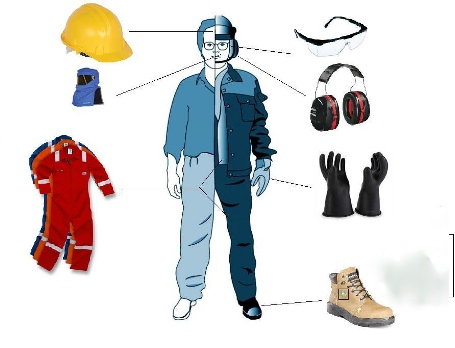Electrical Safety Products

Electrical safety products play a critical role in protecting workers, facilities, and the public from hazards associated with power systems across industrial, commercial, and institutional sectors. In both the United States and Canada, regulatory agencies have implemented stringent measures to ensure only approved and certified equipment enters the marketplace. As electrical infrastructures evolve, so do the risks associated with counterfeit or substandard components. Updated safety standards and regulations are now in place to address these concerns, with clear guidelines on product certification, distribution accountability, and legal enforcement.
Request a Free Training Quotation
Oversight and Responsibility for Electrical Safety Products
In industrial and commercial facilities, the responsibility for ensuring proper use and selection of electrical safety products typically falls on a combination of parties:
- Manufacturers and Distributors must comply with certification requirements and ensure all products meet national standards.
- Facility Owners, Engineers, and Safety Managers are responsible for purchasing compliant equipment and maintaining workplace safety.
- Regulatory Authorities such as OSHA in the United States and the Electrical Safety Authority (ESA) in Ontario, Canada, oversee enforcement, reporting, and investigations.
These stakeholders work together to maintain a safe environment and minimize the risk of electrical shock, arc flash, fires, and equipment failure.
Product Registration and Market Controls in Canada
In Ontario, the Electrical Safety Authority (ESA) introduced a proactive measure in 2009 to curb the growing presence of counterfeit and non-compliant products. This initiative required manufacturers to register electrical products intended for sale within the province. The registry enables the ESA to track products more efficiently, identify unapproved devices, and take enforcement action when necessary. This approach ensures that compliant manufacturers have fair market access while protecting consumers and workers from unsafe alternatives.
The Need for Reform in Electrical Product Regulation
The ESA’s expanded mandate was driven by several critical issues:
- A rise in counterfeit and unapproved electrical components entering the market
- Limited mechanisms to compel corrective action for unsafe products
- Insufficient incident reporting by manufacturers and distributors
- Gaps in oversight due to globalization and complex supply chains
These challenges elevated the risk of electrical accidents, particularly in high-demand environments like manufacturing plants and large commercial buildings. Without stricter controls, both workers and end-users were left vulnerable to failures in product integrity.
Ontario’s Regulation 438/07: A Legal Framework for Safety
To address these concerns, Ontario Regulation 438/07 was enacted, setting out legal responsibilities for all stakeholders in the electrical product supply chain. This regulation outlines reporting obligations, approval processes, and enforcement mechanisms to promote compliance and public safety.
Under this regulation, all parties—manufacturers, importers, wholesalers, retailers, certification bodies, and field evaluation agencies—are required to report:
- Any known defects in electrical equipment that may pose a safety risk
- Any incidents or accidents involving electrical products that could compromise public safety
The goal is not only to identify and eliminate dangerous products but also to foster accountability within the industry and ensure a consistent application of safety standards.
Electrical Product Compliance in the USA
In the United States, the Occupational Safety and Health Administration (OSHA), along with the National Electrical Code (NEC), plays a similar role in maintaining safety standards. Products must be certified by Nationally Recognized Testing Laboratories (NRTLs) such as UL, CSA (when operating in the U.S.), and ETL. Employers must ensure that only certified products are used in the workplace, especially where workers may be exposed to energized components.
Failure to comply with OSHA’s regulations can lead to significant penalties and increased liability in the event of an electrical accident. Electrical safety products must be integrated into a broader safety program, including proper training (e.g., NFPA 70E in the U.S. and CSA Z462 in Canada) and regular equipment inspections.
Moving Toward Safer Markets in North America
With the rapid pace of global manufacturing and online marketplaces, vigilance around electrical safety product compliance has become more critical than ever. Agencies in both Canada and the United States continue to update safety protocols and approval mechanisms to protect workers and ensure product integrity. Industry leaders are encouraged to remain informed of evolving standards, invest in worker training, and conduct thorough risk assessments before purchasing or installing electrical components.
Ultimately, ensuring electrical product safety is not the job of regulators alone—it requires full participation from every player in the supply chain. By prioritizing compliance and collaboration, North America can lead the way in electrical safety innovation and workforce protection.
For more information, see:
Arc Flash Group Training

We can present this Course to your electrical engineering and maintenance staff, on your premises, tailored to your specific equipment and requirements. We are ready to help design this program for you. Click on the link below to request a FREE quotation.
Live Online Electrical Training Schedule
October 2025
- Arc Flash Training - CSA Z462 Electrical Safety
- Combined CSA Z462 LV & HV Electrical Safety Training
- High Voltage Safety Training
- NFPA 70e Training
- Substation Maintenance Training
November 2025
- Power Transformer Maintenance Training
- NFPA 70b Training - Electrical Maintenance
- Emergency Generators & Standby Power Systems
- 2024 CE Code - Changes and Fundamentals
- 2024 CE Code - Combined Course: Changes/Fundamentals and Calculations
- Lightning Protection Systems Training For Utility, Industrial, Commercial & Institutional power systems
- CE Code Calculations: Practical Applications and Advanced Techniques
